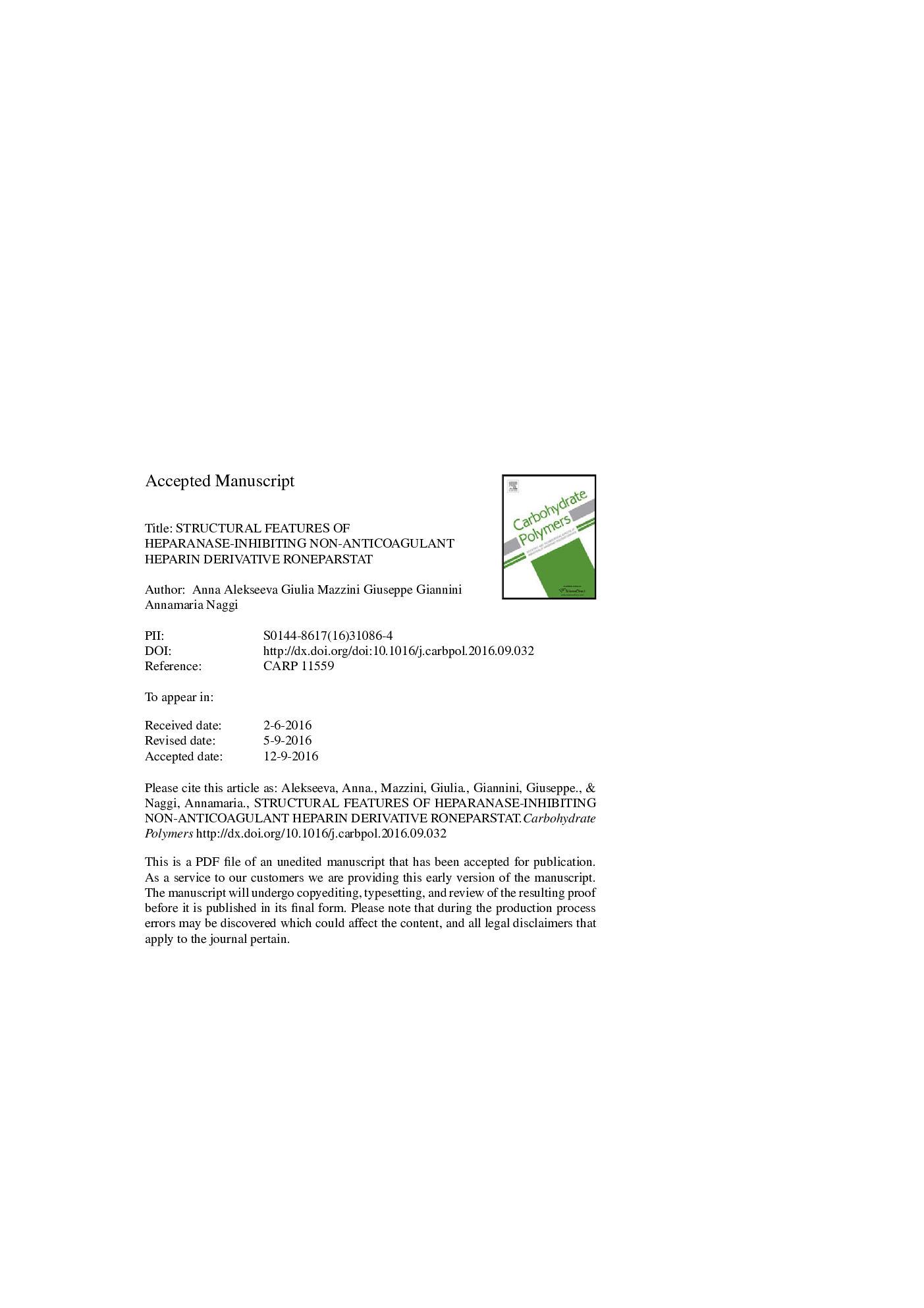| Article ID | Journal | Published Year | Pages | File Type |
|---|---|---|---|---|
| 5157509 | Carbohydrate Polymers | 2017 | 43 Pages |
Abstract
Owing to their anti-tumor and anti-inflammatory properties, non-anticoagulant glycol-split (gs) heparins, obtained by periodate oxidation/borohydride reduction, are of growing interest. The present study was focused on the structural characterization of N-acetylated gs-heparin Roneparstat, a promising anti-cancer heparanase-inhibiting drug currently being investigated in clinical trials. The major and minor structural features of structurally complex Roneparstat have been characterized for the first time using conductimetric titration, size-exclusion chromatography with triple detector array, NMR and LC/MS. It has been shown that gs-uronic acids are mainly interspersed by unmodified disaccharide building blocks, but can also be present within sequences with consequent gs-residues. Peculiar gs-sequences, such as those derived from antithrombin binding regions and those containing I2S-ANS3S6S, as well as a variety of unnatural terminal groups, markers of preparation processes, have also been identified in Roneparstat. Structural features of Roneparstat that may play an important role in interactions with proteins have been summarized.
Keywords
Related Topics
Physical Sciences and Engineering
Chemistry
Organic Chemistry
Authors
Anna Alekseeva, Giulia Mazzini, Giuseppe Giannini, Annamaria Naggi,
